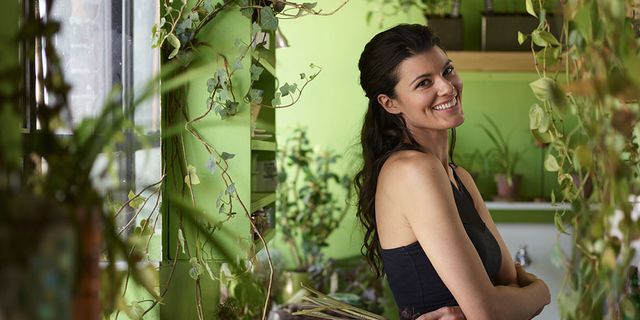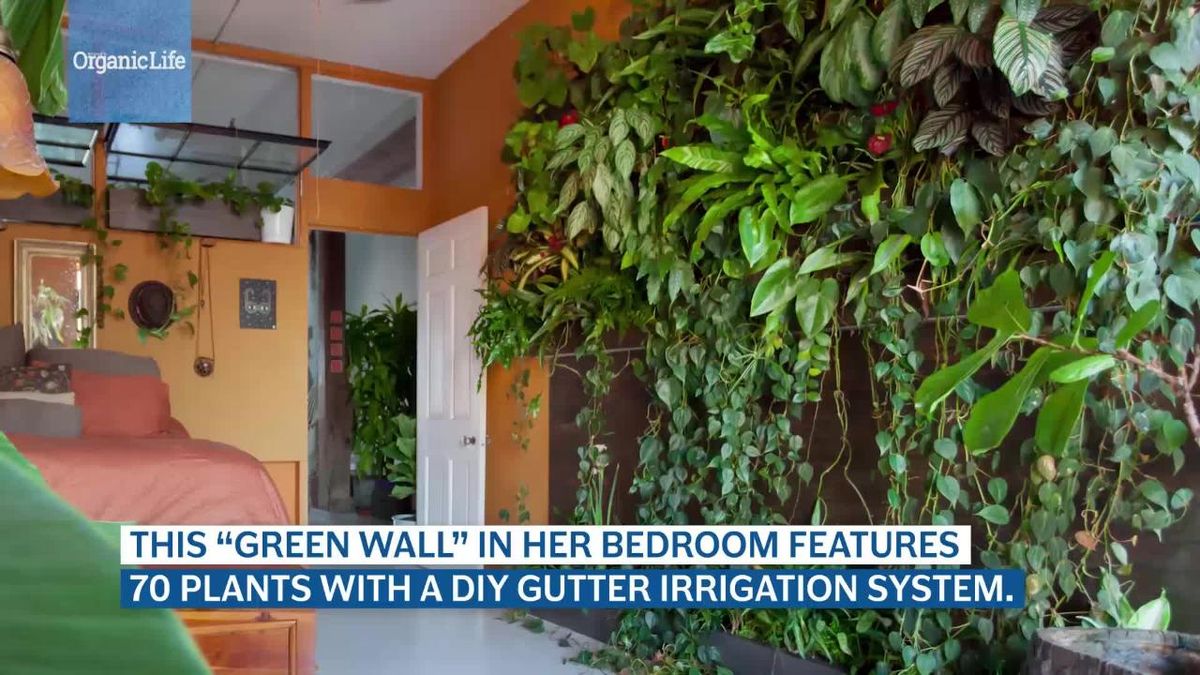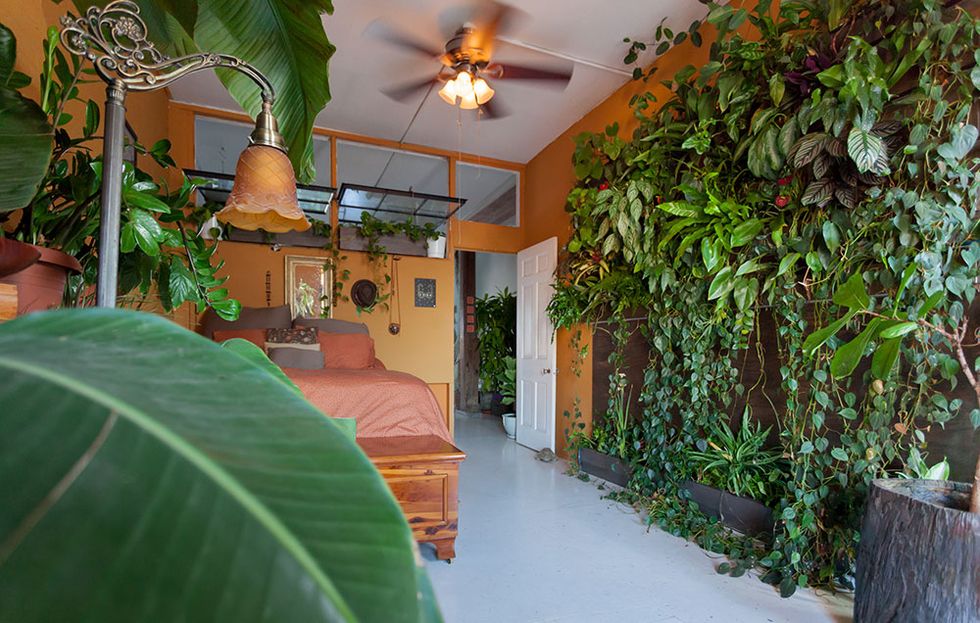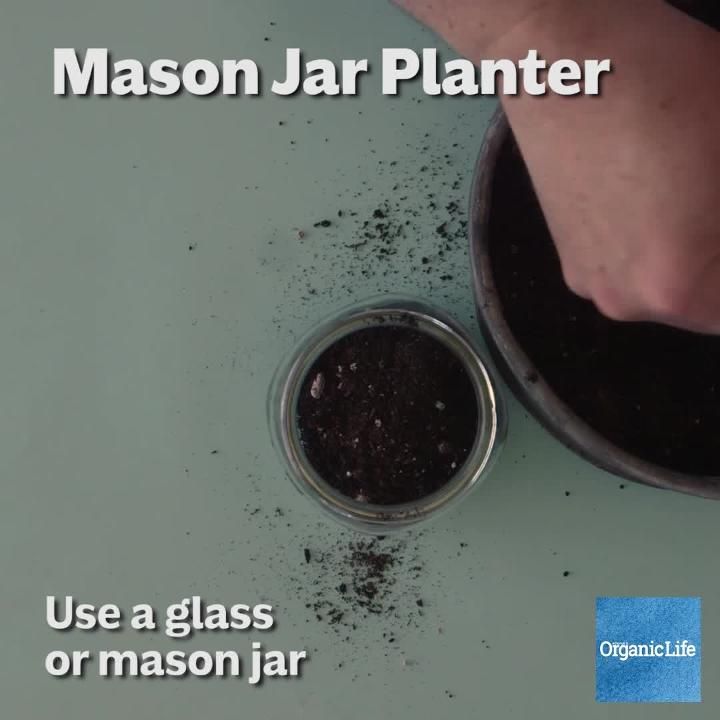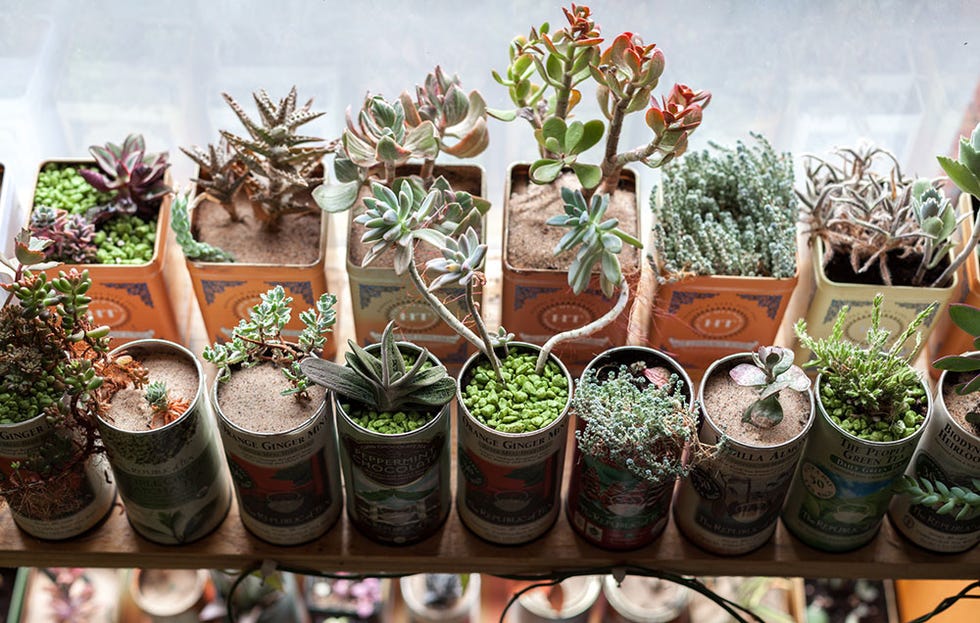I didn’t set out own 670 houseplants in my Brooklyn apartment. But then, I never expected to live in the city twelve years, either. I never pictured living in any city—more often than not I imagined a future with a big, grassy backyard, surrounded by meadows and a wooded area, where I could smell cool dirt, fallen leaves, and fresh morning dew. You know, basically the place where I grew up, a memory which sticks in my mind like salted sweat to skin on a hot summer day. The plants turn my New York City apartment into a lush urban oasis.
(Here's a video tour of my plant-filled Brooklyn apartment, below!)
When my roommate left Brooklyn to move back to Brazil seven years ago, it took some time for her spirit to dissipate from the house. At first I kept to my own space, as I had five years prior, and rarely did I make a change in the common areas, except for off-loading the old TV, which was never in use anyways; and giving away the coffee-table in the center room, which probably was far afield of any respectable feng-shui principles and definitely stood in the way of unsuspecting shins.
(Whether you're starting your first garden or switching to organic, Rodale’s Basic Organic Gardening has all the answers and advice you need—get your copy today!)
When I felt confident enough to explore the other rooms that I inherited, I began to realize how barren they actually were. If I spoke out loud, (an uncommon occurrence for me seeing that I was living by myself), the echo startled me. The home definitely needed some life, some warming up, and the first thing I could think would satisfy that requirement was a plant. I saved up some extra cash and went down to a plant shop across the street and secured a three-foot tall Ficus lyrata, or fiddle leaf fig, which I knew would do well between my two south-facing windows in my then-bedroom. I suppose it was a sort of “rite of passage” plant, as it symbolized the freedom of living alone once again. (Here are tips for taking care of fiddle leaf figs, which can be a bit finicky.)
If you come to my home now, you’ll see that same Ficus, but instead of looking down on it, you’ll need to crane your neck skyward as your eyes travel over the length of a quarter of the ceiling. It has, as happy figs often do, leafed out in every direction—and left to its own heft, would curve floorwards. I’ve needed to bolster the flaky brunneous branches with rope and nail to walls and ceilings. As such, this corner of the room has fondly been named, “Fig Forest”, which provides a dense canopy of verdure over my “Cacti Corner” and “Aroid Alcove”, both of which flank opposite sides of the fig in south-facing windows. Petite planters overflowing with the equally diminutive leaves and stems of Peperomia—quite possibly my favorite genera of plants—have forced relocation of my books, for I intuitively knew that the living leaves could put the hot sun to more use than the lifeless pages of my sun-bleached books. (Here are 29 creative succulent planter ideas that you should definitely steal.)
Related: 7 Houseplants That Purify Indoor Air
This is a veritable ecosystem of sorts as far as indoor apartment gardening goes, and I am only describing a small corner of my overall home. Since the acquisition of the fig, I’ve converted one wall of my now-bedroom into a vertical garden; clothes that once lined a recess in my home have been converted to shelves of plants; a vertical swing garden, mason jar garden, trellises, air plant fixtures, and drawbridge herb garden—all made out of found or discarded wood—create “living art” throughout the apartment. (Here are 4 ways to make your air plants thrive.)
And even the bathroom—(perhaps especially the bathroom)—due to its large window and inherent humidity from hot showers—has served as a “subtropical” environment for plants, like Begonias, jewel orchids, Aglaonemas, and Chlorophytum. (These last, also known as spider plants, are one of 8 hardy houseplants that can survive your neglect.)
(Like what you're reading? Sign up for our newsletter to get health insights, clever kitchen tricks, gardening secrets, and more—delivered straight to your inbox.)
I often say that the number of plants I bring into my home is directly proportional to the time I spend away from the outdoors. The truth is—at least at this moment in time–the plants in my home make me feel—well—at home. They give me a sense of ease in a rather frenetic city, coax me to sleep at night, and fill me with joy when I awake in the early morning light. During the day, I go through my 30-minute watering routine for all 670 plants, which for me, is a daily moving meditation, which involves both concentration and care.
Related: What Buddhists Can Teach Us About Household Chores
These are the activities that I look forward to on a daily basis, but I first started with one plant, and it’s those first plants that you bring into your home, that will (hopefully) serve as the basis of more to come. (Here’s how to propagate houseplants to create your own urban oasis)
Some elements that you may want to consider as you build your own houseplant collection:
Give your plants light to grow
All plants need light to fuel the photosynthetic process. It’s one of the most important deciding factors for plant health, along with watering, humidity, and airflow, as well as soil substrate. Figuring out what direction your windows face, and if you have supplemental light, will allow you to determine the best plants for your home. (And if you don’t have good light, here are some houseplants that thrive in dark rooms.)
Give your plants room to grow
If you’re giving your plants the correct conditions, in time they will grow—some more quickly than others. If you have many plants near one another, (which can be good to increase humidity levels), know that some plants can and will shade out plants further away from the light, so make sure you give some room for your plants, and stay attuned as to whether leaves are getting ample light.
Related: 10 Hardy Houseplants Anyone Can Grow
Get To Know Your Plants' Enemies
Plants, like animals, are living creatures and can suffer from infections, infestations, and improper care. Living with as many plants as I have over the years, often means that not all is rosy. When I started growing food crops indoors—like potatoes and greens—I began getting way more insects like aphids and thrips, so I decided to fight insect with insect, bringing in beneficial bugs like green lacewings, which have an apt colloquial name of “aphid lions”. (Here are more beneficial insects you actually want in your garden.)
I brought one plant, a Sanchezia speciosa, back from a terrible spider mite infestation, just by increasing humidity levels and introducing lacewings; only for it to get hit by an outbreak of scale, a type of brown insect that sticks to the leaf surface. (Here are organic methods for how to get rid of the most destructive garden insects.) Knowing how to read your plants is a skillset that one develops over time. Wilted, flaccid leaves usually mean too little water. Crisp brown leaves typically means too little humidity. Moldy cacti or succulents can mean too much water. Plants tell us what they need; we just need to learn how to listen.
Related: Never Let A Houseplant Die Again
Don’t be afraid to move your plants
You may need to move your plants for various different reasons. As mentioned, one may shade out the other, and this would require some adjustments. Additionally, some plants don’t appreciate cold drafts, so if you live in colder climates and have drafty doors or windows in the winter months, then you’ll want to move plants back from those areas. If the sun is too hot, which can often happen in a southern exposure, then you may want to move some plants behind a diaphanous shade or further back from the light to prevent leaf-bleaching. All of this means being slightly more attuned to your plants’ needs on a regular basis.
Treat your plants as living art
Plants are a work of art—they beautify our home, stimulate both thought and conversation, and can really pull a place together. It’s important, however, to consider them “living art”, with an emphasis on “living”, which serves as a reminder that they cannot just be admired, but will need to be taken care of. Of course, the beauty of this is that they not only change throughout your time together, but they also take care of you, cleaning your air, soothing your mind—and yes, beautifying your space for you and anyone else who walks through your door.
